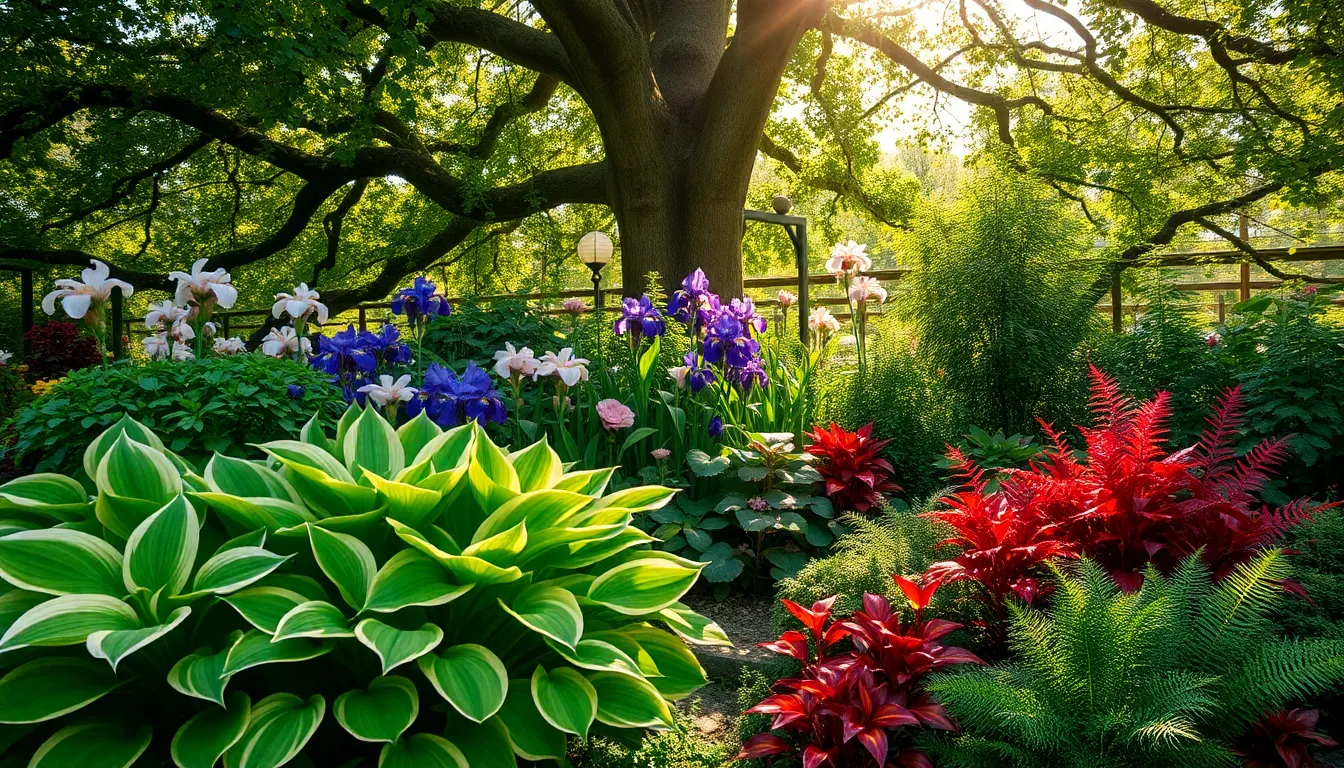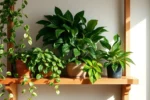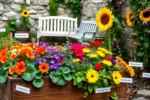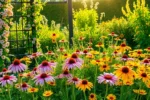Welcome to the enchanting world of shade-loving plants, where even the shadiest corners of your garden can burst with life and color. Whether you’re just starting your gardening journey or have years of experience under your belt, this guide is your key to transforming dim spaces into verdant retreats.
For those who have struggled to find plants that thrive away from the sun’s direct gaze, this collection offers a treasure trove of options. Not only will you discover species that flourish in low-light conditions, but you’ll also learn techniques that ensure your plantings are both beautiful and thriving.
Imagine the joy of creating a lush sanctuary that beckons with tranquility and charm, all while requiring less maintenance than traditional sun-loving gardens. With our carefully curated list, you’ll gain the confidence and knowledge to cultivate a thriving shade garden that rewards you with serenity and satisfaction.
Hosta Varieties (Lush Foliage for Low-Light Areas)
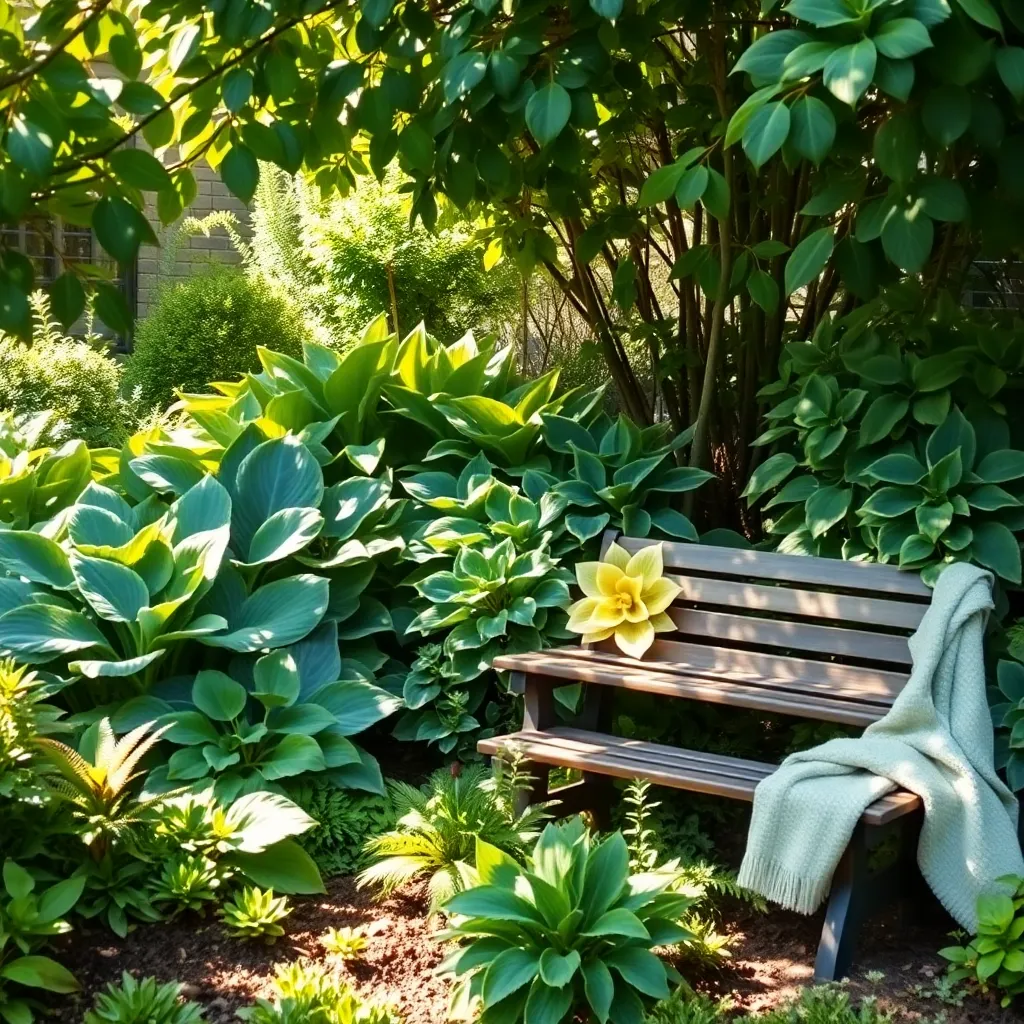
Hostas are a perfect choice for gardeners looking to add lush, vibrant foliage to their low-light garden areas. Known for their broad, variegated leaves, these hardy perennials thrive in shaded locations, making them ideal for planting under trees or along the north side of your house.
For beginners, choose varieties like ‘Frances Williams’ or ‘June,’ which are known for their ease of care and stunning leaf patterns. To ensure healthy growth, plant hostas in well-draining soil enriched with organic matter, and water consistently, especially during dry spells.
Advanced gardeners might explore varieties such as ‘Blue Angel’ or ‘Sum and Substance’ for their larger size and unique color variations. These types benefit from mulching, which helps retain soil moisture and suppress weeds, creating a more hospitable environment for the plants.
While hostas are relatively low-maintenance, they are susceptible to slug damage, particularly in moist conditions. To prevent this, use slug traps or natural deterrents like crushed eggshells around the base of your plants.
Ferns (Elegant Fronds for Shaded Borders)
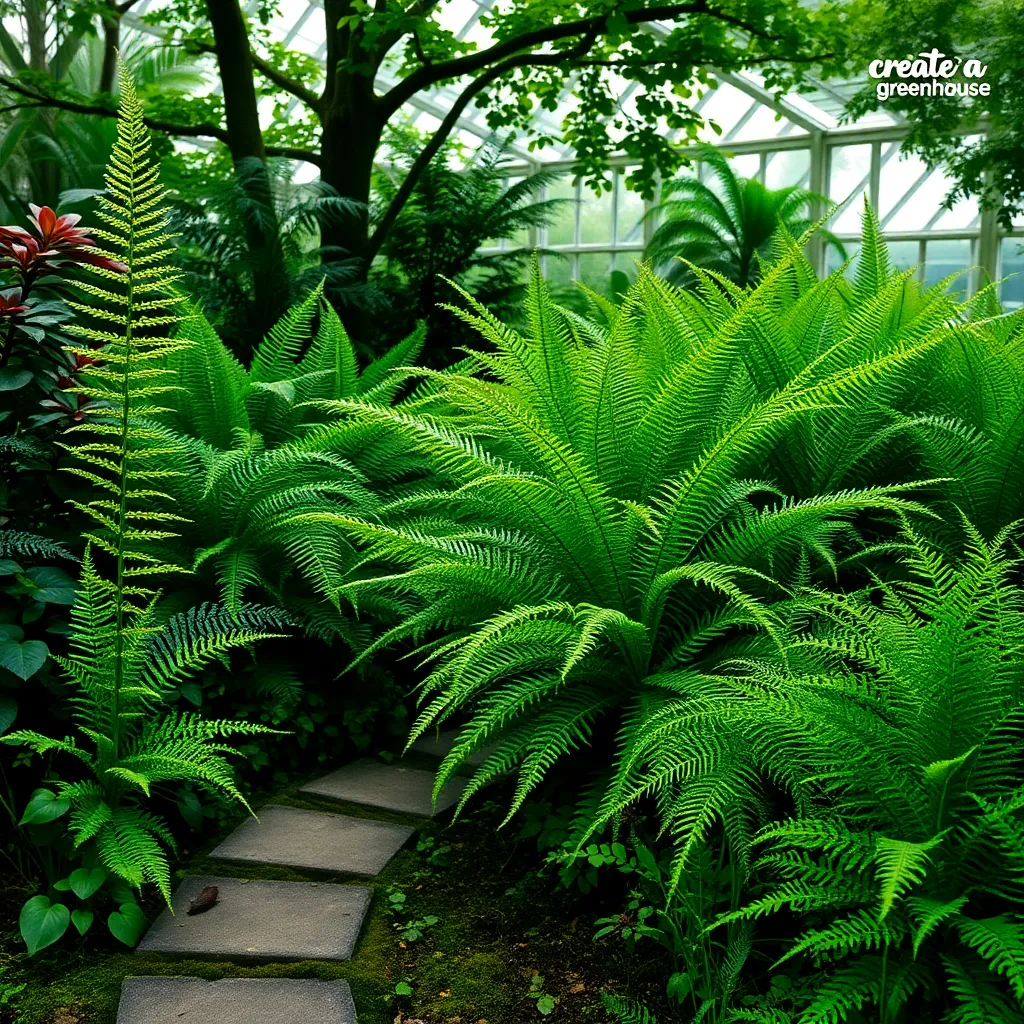
Ferns are a fantastic choice for adding elegance and texture to shaded garden borders. These lush plants thrive in areas with indirect sunlight, making them ideal for gardens with dappled shade or areas under tree canopies.
To help your ferns flourish, ensure they are planted in rich, well-draining soil that maintains moisture without becoming waterlogged. Regular watering, especially during dry periods, will keep their fronds vibrant and healthy, but be cautious to avoid overwatering.
For beginners, starting with hardy varieties like the Boston Fern or Maidenhair Fern can provide a rewarding experience as they are less demanding. More experienced gardeners might enjoy experimenting with rarer species such as the Japanese Painted Fern, which offers striking silver and burgundy hues.
Enhancing soil with organic matter like compost or leaf mold can improve nutrient content and drainage, benefiting ferns significantly. Mulching around the base with bark or leaf mulch will help retain soil moisture and suppress weed growth, creating a more hospitable environment for your ferns.
Astilbe (Vibrant Blooms in Dappled Shade)

Astilbe, known for its vibrant plumes of flowers, thrives in dappled shade, making it an ideal choice for shady garden spots. With a range of colors from red to pink to white, Astilbe can brighten any area with its feathery blooms.
These perennials prefer moist, well-drained soil rich in organic matter. To ensure healthy growth, incorporate compost or peat moss into the planting area to improve soil texture and nutrient content.
Watering is crucial for Astilbe, as they require consistent moisture to maintain their lush appearance. Ensure they receive approximately 1 inch of water per week, either through rainfall or supplemental watering, to prevent the soil from drying out.
While Astilbe is relatively low-maintenance, deadheading spent blooms can encourage a tidier appearance and sometimes a second flush of flowers. Additionally, dividing the clumps every 3 to 4 years will promote vigorous growth and prevent overcrowding, keeping your plants healthy and vibrant.
Heuchera (Colorful Leaves for Ground Cover)
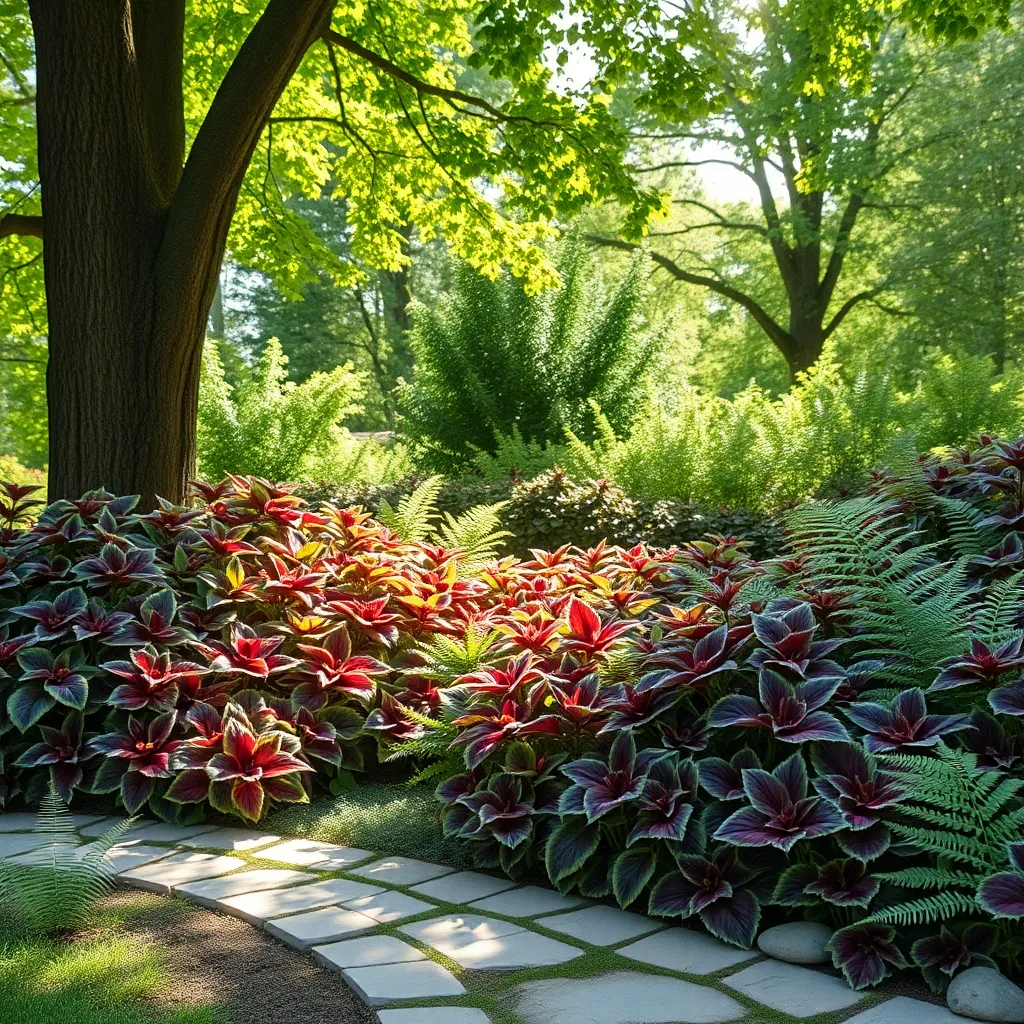
Heuchera, also known as coral bells, is a fantastic choice for adding colorful foliage to your garden’s shady areas. These plants are renowned for their vibrant leaves, which can range from deep purples to bright chartreuses, making them excellent for ground cover beneath trees or in shaded borders.
For optimal growth, plant heuchera in well-draining soil enriched with organic matter to retain some moisture without becoming waterlogged. It’s important to keep the soil consistently moist, especially during hot and dry spells, as these plants prefer regular watering but dislike sitting in soggy conditions.
Beginner gardeners will appreciate the resilience of heuchera, as they are relatively pest-resistant and adapt well to various shade conditions. However, to encourage vigorous growth and vibrant leaf colors, consider applying a balanced, slow-release fertilizer in early spring.
Advanced gardeners might explore dividing heuchera every three to four years to maintain plant health and create new clumps for additional coverage. When dividing, ensure each section has a few healthy roots and leaves, and replant them at the same depth to prevent root rot and promote quick establishment.
Pulmonaria (Speckled Leaves and Spring Flowers)
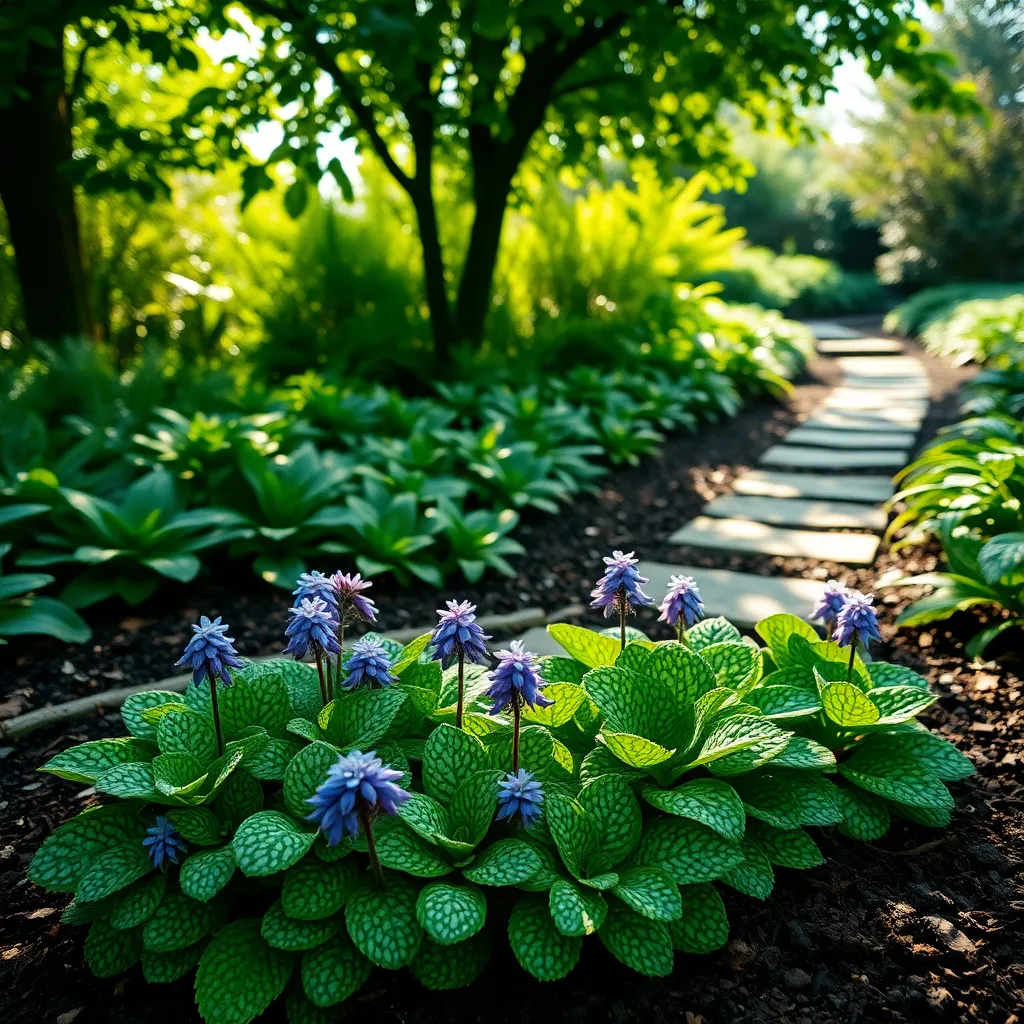
Pulmonaria, known for its charming speckled leaves and vibrant spring flowers, is a delightful addition to any shade garden. These plants thrive in partial to full shade, making them perfect for those tricky spots where sunlight is limited.
For best results, plant Pulmonaria in moist, well-draining soil enriched with organic matter such as compost. Consistent watering is crucial, particularly during dry spells, to maintain the plant’s lush appearance and encourage robust growth.
Beginner gardeners will appreciate Pulmonaria’s low maintenance nature, while more experienced gardeners can experiment with different varieties for varied leaf patterns and flower colors. To enhance the plant’s health and appearance, regularly remove any browned leaves and spent flowers.
To prevent overcrowding and promote vigorous growth, consider dividing the plants every few years in early spring. This not only rejuvenates the original plant but also gives you new plants to expand your garden or share with fellow gardening enthusiasts.
Conclusion: Growing Success with These Plants
In nurturing a thriving garden of shade-loving plants, we unearthed five key relationship concepts that echo the dynamics of healthy human connections. First, understanding unique needs parallels recognizing individual preferences in relationships. Second, providing consistent care is akin to nurturing bonds with attention and love. Third, adapting to changing seasons mirrors the flexibility required in evolving partnerships. Fourth, fostering diversity contributes to a rich, resilient environment, much like diverse perspectives strengthen relationships. Lastly, patience in growth reminds us that flourishing connections take time.
To bring these insights into your personal relationships, choose one concept to focus on this week—perhaps practicing patience or celebrating diversity. See how this small shift might invigorate your connections.
We encourage you to bookmark this article as a nurturing guide, offering inspiration whenever you seek to cultivate deeper, more meaningful relationships. Remember, every step you take towards understanding and caring for those in your life contributes to lasting relationship success. Embrace this journey with optimism, knowing that just like a well-tended garden, your relationships can thrive with mindful attention and care.

